![]()
![]()
![]()
Use LEFT and RIGHT arrow keys to navigate between flashcards;
Use UP and DOWN arrow keys to flip the card;
H to show hint;
A reads text to speech;
24 Cards in this Set
- Front
- Back
|
Why are the Nodes of Ranvier important?
(Think about a wave within a crowd) |
Messages jump faster
|
|
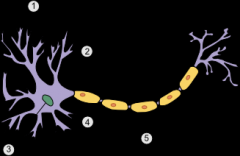
1)
|
Dendrtie
|
|
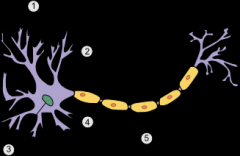
2)
|
Cell Body
|
|
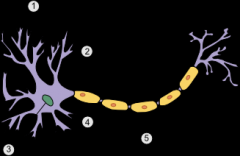
3)
|
Nucleus
|
|
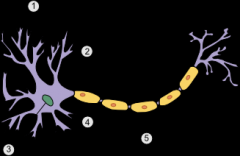
4)
|
Axon
|
|
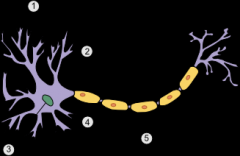
5)
|
Myelin
|
|
|
Do nerve cells touch?
|
No
|
|
|
Respond to chemicals released by damaged cells to indicate injuries in that area?
|
Pain Receptors
|
|
|
In nose and taste buds and are sensitive to the chemicals in the external environment.
|
Chemoreceptors
|
|
|
Found in skin, muscles, and ears; sensitive to touch, pressure, sound, and motion.
|
Mechanoreceptors
|
|
|
Detect temperature with skin and internal core.
|
Thermoreceptors
|
|
|
Found in eyes and are sensitive to light reflections.
|
Photoreceptors
|
|
|
Three components to basic nervous system. (SI, I, MO)
|
Sensory Input, Integration, Motor Output
|
|
|
What part of the nervous system deals with reflex actions?
|
Spinal Cord
|
|
|
Purpose of meninges.
|
To protect
|
|
|
Purpose of cerebrospinal fluid.
|
Deliver nutrients and remove wastes
|
|
|
Purpose of brain stem.
|
Regulate Homeostasis
|
|
|
What is Homeostasis?
|
Body that regulates internal dealings.
|
|
|
Layers of the Earth. (IC, OC, M, C)
|
Inner Core, Outer Core, Mantle, Crust
|
|
|
The two parts that make up the Mantle. (L, A)
|
Lithosphere, Asthenosphere
|
|
|
What does ATP create?
|
Energy
|
|
|
What is ATP made of? (ONB, TPM)
|
One Nitrogen Base, Three Phosphate Molecules
|
|
|
Energy bond between phosphate groups break and energy is produced and...(A...S...T...I...A...)
|
ADP structure turns into ATP
|
|
|
Part of a gene from DNA creates a complimentary codon RNA and is sent out of nucleus.
|
Replication
|

